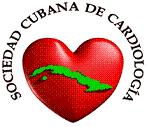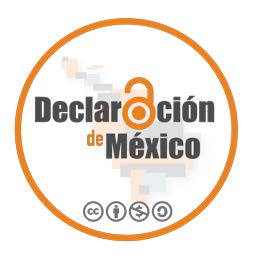Mortalidad pre hospitalaria en el Infarto agudo del miocardio. Variables asociadas
Texto completo:
PDFResumen
En el infarto agudo de miocardio con elevación del ST (IAMCEST), el tiempo transcurrido entre el inicio de los síntomas hasta la aplicación del tratamiento es inversamente proporcional a la cantidad de miocardio recuperado y en consecuencia al número de vidas salvadas, lo cual hace de la fase pre hospitalaria, la más crítica y a la vez la de mayor oportunidad en el tratamiento de los pacientes.
La mortalidad está determinada por el tiempo total de isquemia en el paciente, en el cual se agrupan variables dependientes del paciente y del sistema de atención.
Reducir al mínimo el tiempo que tarda el paciente en identificar sus síntomas y en consecuencia, solicitar asistencia médica, el arribo precoz de una ambulancia bien equipada, con personal entrenado capaz de realizar el diagnóstico en el sitio del primer contacto, la aplicación del tratamiento farmacológico inicial y el traslado del paciente a un centro de asistencia cardiológico apropiado para recibir terapia de reperfusión, deben ser los pilares de la atención en esta etapa inicial.
La intervención coronaria percutánea primaria (ICPp) es el tratamiento de elección, pero la trombolisis seguida de angiografía coronaria y posiblemente ICP constituye una alternativa válida, en función del riesgo inicial del paciente, el tiempo transcurrido desde el inicio de los síntomas y el retraso asociado a la ICPp.
Disminuir los retrasos dependientes del paciente y del sistema y viabilizar la selección de los casos para estrategias de reperfusión permite mejorar la evolución clínica, el pronóstico y disminuir la mortalidad del IAMCEST.
Palabras clave
Referencias
G.A. Roth, M.H. Forouzanfar, A.E. Moran. Demographic and epidemiologic drivers of global cardiovascular mortality. N Engl J Med. 2015 [citado 12 Ago 2019]; 372:1333-1341. Disponible en: http://dx.doi.org/10.1056/NEJMoa1406656.
D. Mozaffariam, E.J. Benjamin, A.S. Go. American Heart Association Statistics Committee and Stroke Statistics Subcommittee. Heart disease and stroke statistics 2015 update. A report from the American Heart Association. Circulation., 131 (2015), pp. e29-e322. [citado 12 Ago 2019]. Disponible en: http://dx.doi.org/10.1161/CIR.0000000000 000152.
World Health Organization. Global status report of noncommunicable diseases 2014. Geneva: World Health Organization; 2014 [citado 13 Ago 2019]. Disponible en: http://www.who.int/nmh/publications/ncd-status-report-2014/en/.
Ministerio de Salud Pública. Anuario Estadístico de Salud 2018. La Habana: Dirección Nacional de Registros Médicos y Estadísticas de Salud; 2019. [citado 13 Ago 2019]. Disponible en: http://files.sld.cu/bvscuba/files/2019/04/Anuario-Electr%C3%B3nico-Espa % C3 %B1ol - 2018-ed-2019-compressed.pdf.
T.A. Pearson, T.L. Bazzarre, S.R. Daniels. American Heart Association guide for improving cardiovascular health at the community level: a statement for public health practicioners, healthcare providers and health policy makers from American Heart Association Expert Panel on Population and Prevention Science. Circulation. 2003; 107: 645-651.
H.M. Krumholz, S.L. Normand, Y. Wang. Trends in hospitalizations and outcomes for acute cardiovascular disease and stroke, 1999-2011. Circulation.2014 [citado 17 Ago 2019]; 130: 66-975. Disponible en: http://dx.doi.org/10.1161/ CIRCULATIONAHA.113. 007787.
Tubaro M, Danchinb N, Goldsteinc P, Filippatosd G, Hasine Y, Herasf M, et al. Tratamiento prehospitalario de los pacientes con IAMCEST. Una declaración científica del Working Group Acute Cardiac Care de la European Society of Cardiology. Rev Esp Cardiol. 2012;65(1):60–70.
Zipes DP, Wellens HJ. Sudden cardiac death. Circulation. 1998;98(21):2334-51.
Jacobs AK, Antman EM, Ellrodt G, Faxon DP, Gregory T, Mensah GA, et al.; American Heart Association’s Acute Myocardial Infarction Advisory Working Group. Recommendation to develop strategies to increase the number of ST segment-elevation myocardial infarction patients with timely access to primary percutaneous coronary intervention. Circulation. 2006;113:2152–63.
Bayés de Luna A, Elosua R. Muerte súbita. Rev Esp Cardiol. 2012;65(11):1039–1052.
Bayés de Luna A, Martínez Rubio A, Bayés-Genis A, Guindo J. Isquemia miocárdica y muerte súbita. Cardiovasc Risk Factors. 2000;9(6):401-7.
Fox KA, Huber K. A European perspective on improving acute systems of care in STEMI: We know what to do, but how can we do it? Nat Clin Pract Cardiovasc Med. 2008;5:708–14.
Ochoa Montes LA. Muerte súbita cardíaca en comunidades de Arroyo Naranjo en el período 2000-2010 [Tesis doctoral]. La Habana: Universidad de Ciencias Médicas; 2012 [citado 17 Ago 2019]. Disponible en: http://tesis.repo.sld.cu/639/1/ Luis_Alberto_Ochoa_ Montes.pdf.
Mc Ginn AP, Rosamond WD, Goff Jr DC, Taylor HA, Miles JS, Chambless L. Trends in pre-hospital delay time and use of emergency medical services for acute myocardial infarction: Experience in 4 US communities from 1987-2000. Am Heart J. 2005;150:392–400.
Ting HH, Krumholz HM, Bradley EH, Cone DC, Curtis JP, Drew BJ, et al. American Heart Association Interdisciplinary Council on Quality of Care and Outcomes Research, Emergency Cardiovascular Care Committee; American Heart Association Council on Cardiovascular Nursing; American Heart Association Council on Clinical Cardiology. Implementation and integration of prehospital ECGs into systems of care for acute coronary syndrome: A scientific statement from the American Heart Association Interdisciplinary Council on Quality of Care and Outcomes Research, Emergency Cardiovascular Care Committee, Council on Cardiovascular Nursing, and Council on Clinical Cardiology. Circulation. 2008;118:1066–79.
Larsen JM, Ravkilde J. Acute coronary angiography in patients resuscitated from out-of-hospital cardiac arrest: a systematic review and meta-analysis. Resuscitation. 2012;83(12):1427–1433.
Monsieurs KG, Nolan JP, Bossaert LL, Greif R, Maconochie IK, Nikolaou NI, et al; ERC Guidelines 2015 Writing Group. European Resuscitation Council Guidelines for Resuscitation 2015: section 1. Executive summary. Resuscitation. 2015;95:1–80.
Iwami T, Nichol G, Hiraide A, Hayashi Y, Nishiuchi T, Kajino K, et al. Continuous improvements in ‘chain of survival’ increased survival after out-of-hospital cardiac arrest: A large-scale population- based study. Circulation. 2009; 119:728–34.
Fordyce CB, Al-Khalidi HR, Jollis JG, Roettig ML, Gu J, Bagai A, Berger PB, Corbett CC, Dauerman HL, Fox K, Garvey JL, Henry TD, Rokos IC, Sherwood MW, Wilson BH, Granger CB, STEMI Systems Accelerator Project. Association of rapid care process implementation on reperfusion times across multiple ST segment elevation myocardial infarction networks. Circ Cardiovasc Interv.2017;10 (1):e004061.
Welsh RC, Chang W, Goldstein P, Adgey J, Granger CB, Verheugt FW, Wallentin L, Van de Werf F, Armstrong PW. Time to treatment and the impact of a physician on prehospital management of acute ST elevation myocardial infarction: insights from the ASSENT-3 PLUS trial. Heart. 2005;91(11):1400–1406.
Afolabi BA, Novaro GM, Pinski SL, Fromkin KR, Bush HS. Use of the prehospital ECG improves door-to-balloon times in ST segment elevation myocardial infarction irrespective of time of day or day of week. Emerg Med J.2007;24:588–91.
Danchin N, Coste P, Ferrieres J, Steg PG, Cottin Y, Blanchard D, Belle L, Ritz B, Kirkorian G, Angioi M, Sans P, Charbonnier B, Eltchaninoff H, Gueret P, Khalife K, Asseman P, Puel J, Goldstein P, Cambou JP, Simon T, FAST-MI Investigators. Comparison of thrombolysis followed by broad use of percutaneous coronary intervention with primary percutaneous coronary intervention for ST segment elevation acute myocardial infarction: Data from the French registry on acute ST-elevation myocardial infarction (FAST-MI). Circulation. 2008;118(3): 268–276.
Bassand JP, Danchin N, Filippatos G, Gitt A, Hamm C, Silber S, et al. Implementation of reperfusion therapy in acute myocardial infarction. A policy statement from the European Society of Cardiology. Eur Heart J. 2005;26:2733–41.
Rokos IC, French WJ, Mattu A, Nichol G, Farkout ME, Reiffel J, et al. Appropriate cardiac cath lab activation: Optimizing electrocardiogram interpretation and clinical decision-making for acute ST-elevation myocardial infarction. Am Heart J. 2010;160:995–1003.
Daudelin DH, Sayah AJ, Kwong M, Restuccia MC, Porcaro WA, Ruthazer R, et al. Improving use of prehospital 12-lead ECG for early identification and treatment of acute coronary syndrome and ST-elevation myocardial infarction. Circ Cardiovasc Qual Outcomes. 2010;3:316–23.
Van de Werf F, Bax J, Betriu A, Blomstrom-Lundqvist C, Crea F, Falk V, et al. Management of acute myocardial infarction in patients presenting with persistent ST-segment elevation: The task force on the management of STsegment elevation acute myocardial infarction of the European Society of Cardiology. Eur Heart J. 2008;29:2909–45.
Ibáñez B, James S, Agewall S, Antunes MJ, Bucciarelli-Ducci C, Bueno H, et al. Guía ESC 2017 sobre el tratamiento del infarto agudo de miocardio en pacientes con elevación del segmento ST. Rev Esp Cardiol. 2017;70(12):1082.e1-e61.
Fordyce CB, Al-Khalidi HR, Jollis JG, Roettig ML, Gu J, Bagai A, Berger PB, Corbett CC, Dauerman HL, Fox K, Garvey JL, Henry TD, Rokos IC, Sherwood MW, Wilson BH, Granger CB, STEMI Systems Accelerator Project. Association of rapid care process implementation on reperfusion times across multiple STsegmentelevation myocardial infarction networks. Circ Cardiovasc Interv. 2017;10(1):e004061.
Bagai A, Jollis JG, Dauerman HL, Peng SA, Rokos IC, Bates ER, French WJ, Granger CB, Roe MT. Emergency department bypass for ST-segment-elevation myocardial infarction patients identified with a prehospital electrocardiogram: a report from the American Heart Association Mission: Lifeline program. Circulation.2013;128(4):352–359.
Wang TY, Nallamothu BK, Krumholz HM, Li S, Roe MT, Jollis JG, Jacobs AK, Holmes DR, Peterson ED, Ting HH. Association of door-in to door-out time with reperfusion delays and outcomes among patients transferred for primary percutaneous coronary intervention. JAMA. 2011;305(24):2540–2547.
Keeley EC, Boura JA, Grines CL. Primary angioplasty versus intravenous thrombolytic therapy for acute myocardial infarction: A quantitative review of 23 randomized trials. Lancet. 2003;361:13–20.
Van de Werf F, Bax J, Betriu A, Blomstrom-Lundqvist C, Crea F, Falk V, et al. Management of acute myocardial infarction in patients presenting with persistent ST-segment elevation: The task force on the management of STsegment elevation acute myocardial infarction of the European Society of Cardiology. Eur Heart J. 2008;29:2909–45.
Widimsky P, Budesinsky T, Vorac D, Groch L, Zelizko M, Aschermann M, et al. ‘PRAGUE’ Study Group Investigators. Long distance transport for primary angioplasty vs immediate thrombolysis in acute myocardial infarction. Final results of the randomized national multicenter trial—PRAGUE-2. Eur Heart J. 2003; 24(1):94–104.
Andersen HR, Nielsen TT, Rasmussen K, Thuesen L, Kelbaek H, Thayssen P, et al. DANAMI-2 Investigators. A comparison of coronary angioplasty with fibrinolytic therapy in acute myocardial infarction. N Engl J Med. 2003;349(8):733–742.
Madan M, Halvorsen S, Di Mario C, Tan M, Westerhout CM, Cantor WJ, Le May MR, Borgia F, Piscione F, Scheller B, Armstrong PW, Fernandez-Aviles F, Sanchez PL, Graham JJ, Yan AT, Goodman SG. Relationship between time to invasive assessment and clinical outcomes of patients undergoing an early invasive strategy after fibrinolysis for ST-segment elevation myocardial infarction: a patient-level analysis of the randomized early routine invasive clinical trials. JACC Cardiovasc Interv. 2015;8(1 Pt B):166–174.
Liakopoulos V, Kellerth T, Christensen K. Left bundle branch block and suspected myocardial infarction: does chronicity of the branch block matter? Eur Heart J Acute Cardiovasc Care. 2013;2(2):182–189.
Hochman JS, Lamas GA, Buller CE, Dzavik V, Reynolds HR, Abramsky SJ, et al. Occluded Artery Trial Investigators. Coronary intervention for persistent occlusion after myocardial infarction. N Engl J Med. 2006;355(23): 2395–2407.
Menon V, Pearte CA, Buller CE, Steg PG, Forman SA, White HD, et al. Lack of benefit from percutaneous intervention of persistently occluded infarct arteries after the acute phase of myocardial infarction is time independent: insights from Occluded Artery Trial. Eur Heart J. 2009;30(2):183–191.
Armstrong PW, Gershlick AH, Goldstein P, Wilcox R, Danays T, Lambert Y, et al. STREAM Investigative Team. Fibrinolysis or primary PCI in STsegment elevation myocardial infarction. N Engl J Med. 2013;368 (15):1379–1387.
Gershlick AH, Stephens-Lloyd A, Hughes S, Abrams KR, Stevens SE, Uren NG, et al. REACT Trial Investigators. Rescue angioplasty after failed thrombolytic therapy for acute myocardial infarction. N Engl J Med. 2005;353(26):2758–2768.
Stenestrand U, Lindback J, Wallentin L; for the RIKS-HIA Registry. Long-term outcome of primary percutaneous coronary intervention vs prehospital and in-hospital thrombolysis for patients with ST-elevation myocardial infarction. JAMA. 2006;296:1749–56.
Lamfers EJP, Hooghoudt TEH, Hertzberger DP, Schut A, Stolwijk PWJ, Verheugt FWA. Abortion of acute ST segment elevation myocardial infarction after reperfusion: Incidence, patients’ characteristics, and prognosis. Heart. 2003;89:496–501.
Bohmer E, Hoffmann P, Abdelnoor M, Arnesen H, Halvorsen S. Efficacy and safety of immediate angioplasty versus ischaemia-guided management after thrombolysis in acute myocardial infarction in areas with very large transfer distances. Results of the NORDISTEMI (Norwegian study of district treatment of ST-elevation myocardial infarction). J Am Coll Cardiol. 2010;55:102–10.
Danchin N, Coste P, Ferrieres J, Steg P-G, Cottin Y, Blanchard D, et al.; for the FAST-MI Investigators. Comparison of thrombolysis followed by broad use of percutaneous coronary intervention with primary percutaneous coronary intervention for ST-elevation acute myocardial infarction: data from the French Registry of acute ST-elevation myocardial infarction (FAST-MI). Circulation. 2008;118:268–76.
Enlaces refback
- No hay ningún enlace refback.
Copyright (c) 2019 Luis Alberto Ochoa Montes, Mileydis González Lugo, Doris Nidia Tamayo Vicente, Rafael Emilio Araujo González, Maikel Santos Medina

Esta obra está bajo una licencia de Creative Commons Reconocimiento-NoComercial 4.0 Internacional.












